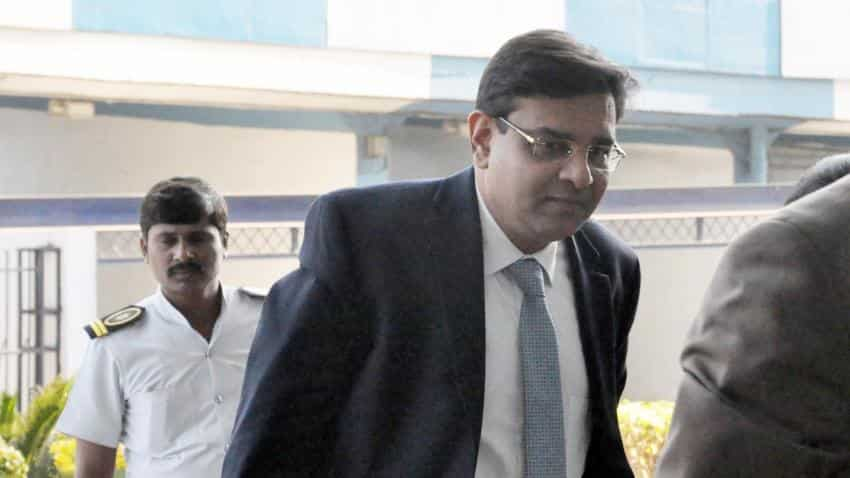RBI's bi-monthly monetary policy in two minutes
The Reserve Bank of India (RBI) and Monetary Policy Committee (MPC) on Thursday kept the key policy rate unchanged at 6.25% in order to achieve its medium-term CPI inflation target of 4% and to support the economic growth.

With an aim to achieve its medium-term target of achieving CPI inflation of 4% and to support the economic growth, the Reserve Bank of India (RBI) governor Urjit Patel along with its monetary policy committee (MPC) members on Thursday kept the key policy rate unchanged at 6.25%.
However, the central bank has increased the reverse repo rate under the liquidity adjustment facility (LAF) at 6% from 5.75% earlier. Reverse repo rate is the rate at which banks borrow from the central bank.
It has kept the marginal standing facility (MSF) rate and the bank rate at 6.50%.
ALSO READ: Reserve Bank of India keeps repo rate unchanged; pegs GVA at 8.1% in FY19
Here are key highlights of RBI's outlook on its first bi-monthly monetary policy of fiscal year 2017-18 (FY18):
1.Inflation is edging up in advanced economies (AEs) to or above target levels on the back of slowly diminishing slack, tighter labour markets and rising commodity prices.
2.The central bank for the current fiscal 2017-18 (FY18) has projected inflation to average 4.5% in the first half of the year and 5% in the second half of the year.
3. A prominent risk could emanate from managing the implementation of the allowances recommended by the 7th Central Pay Commission (CPC). In case the increase in house rent allowance (HRA) as recommended by the 7th CPC is awarded, it will push up the baseline trajectory by an estimated 100-150 basis points over a period of 12-18 months, with this initial statistical impact on the CPI followed up by secondorder effects.
4. The general government deficit, which is high by international comparison, poses yet another risk for the path of inflation, which is likely to be exacerbated by farm loan waivers.
5. Gross value added (GVA) growth is projected to strengthen to 7.4% in 2017-18 from 6.7% in 2016-17 .
6. Significant improvement in transmission of past policy rate reductions into banks’ lending rates post demonetisation should help encourage both consumption and investment demand of healthy corporations.
7. Various proposals in the Union Budget should stimulate capital expenditure, rural demand, and social and physical infrastructure all of which would invigorate economic activity.
8. The imminent materialisation of structural reforms in the form of the roll-out of the GST, the institution of the Insolvency and Bankruptcy Code, and the abolition of the Foreign Investment Promotion Board will boost investor
confidence and bring in efficiency gains.
9. The upsurge in initial public offerings (IPOs) in the primary capital market augurs well for investment and growth.
10. Downside risks to the projected growth path stem from the outturn of the south west monsoon; ebbing consumer optimism on the outlook for income, the general economic situation and employment as polled in the March 2017 round of the Reserve Bank’s consumer confidence survey.
ALSO READ: RBI bi-monthly monetary policy: Measures to soak up excess liquidity will be keenly watched
Get Latest Business News, Stock Market Updates and Videos; Check your tax outgo through Income Tax Calculator and save money through our Personal Finance coverage. Check Business Breaking News Live on Zee Business Twitter and Facebook. Subscribe on YouTube.
RECOMMENDED STORIES

Rs 3,500 Monthly SIP for 35 years vs Rs 35,000 Monthly SIP for 16 Years: Which can give you higher corpus in long term? See calculations

Small SIP, Big Impact: Rs 1,111 monthly SIP for 40 years, Rs 11,111 for 20 years or Rs 22,222 for 10 years, which do you think works best?

Power of Compounding: How long it will take to build Rs 5 crore corpus with Rs 5,000, Rs 10,000 and Rs 15,000 monthly investments?
03:40 PM IST










 Reserve Bank of India keeps repo rate unchanged; pegs GVA at 8.1% in FY19
Reserve Bank of India keeps repo rate unchanged; pegs GVA at 8.1% in FY19 9 things to watch out for before RBI's bi-monthly monetary policy
9 things to watch out for before RBI's bi-monthly monetary policy RBI bi-monthly monetary policy: Measures to soak up excess liquidity will be keenly watched
RBI bi-monthly monetary policy: Measures to soak up excess liquidity will be keenly watched RBI Monetary Policy: Status-quo likely but outlook will be key
RBI Monetary Policy: Status-quo likely but outlook will be key Real estate shares gain as RBI allows bank investment in REITs
Real estate shares gain as RBI allows bank investment in REITs